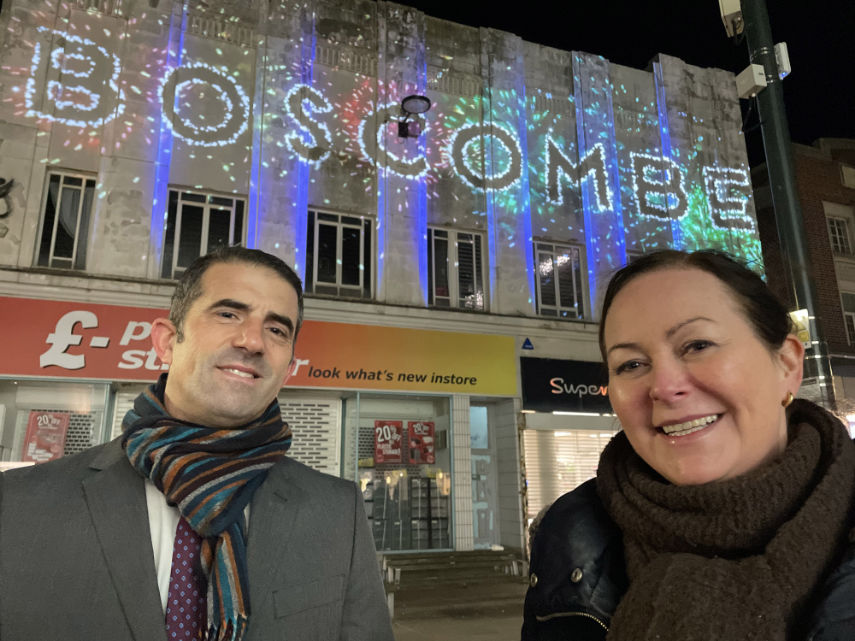Emmy Award-winning cinematographer Bob Poole has worked with the Hadzabe and Maasai tribes in Tanzania to get closer to African wildlife. Extraordinary footage from the filming of a Ketchum resident will be featured on the BBC’s “Life at the Waterhole” television series, which airs Wednesdays on PBS from May 19 to June 2 at 6 p.m. ET.
The series captures the daily drama of African wildlife in a unique man-made waterhole in the Mwiba reserve equipped with partially submerged and weatherproof cameras. Poole worked with renowned conservation scientist Dr M. Sanjayan.
“The wildlife appeared within hours,†said Poole. “The first to arrive were warthogs who had observed the construction and were eager to jump in and take a mud bath. The elephants have an incredible sense of smell and they arrived soon after. It didn’t take long for the other animals to discover the water, and they returned regularly afterwards.
Poole, 62, said the location at the southern tip of the Serengeti is a community-owned conservation area where indigenous people benefit from tourism. But elephants and buffaloes, along with other animals, are in desperate need of water during the dry season, and conflicts between wildlife and humans arise in the man-made wells.
“The water point was built to alleviate the conflict in the nearby wells,†said Poole. “A man-made water point for wildlife was a good solution to the problem.”
Over the seasons, the crew saw various animals coming at different times of the day. During the driest time of the year, most animals arrived in the middle of the day. During the hottest time of the year, most of the animals came at night. During the rains, the animals still came to the water point.
“We believe it was built on an open plain where the animals felt safe as the grass was short and the lack of bush made it difficult to hide from predators,†said Poole. “It was amazing to be so close to the elephants, buffalos and giraffes while they were drinking.”
Poole has spent time around natural waterholes in Africa since he was a child. Her father worked in the Peace Corps in Kenya. He moved to Sun Valley almost 40 years ago to work with Jim Dutcher on a wolf movie. He has shot award-winning documentaries for the PBS series “Nature” and “NOVA”, the BBC and Discovery Channel networks, and nearly 40 programs for National Geographic Television. In 2011, he won an Emmy for Outstanding Cinematography in National Geographic’s flagship series “Great Migrations.”
“For me, life at the waterhole was very normal,†said Poole. “Many species approach the water point together, there is security in numbers. Baboons have excellent eyesight; giraffes have a better perspective. A herd of impala has so many collective eyes. Competition for water between animals is rare but does exist. For the most part, the animals take their turn and share.
Bob Poole, a Ketchum resident, has been filming African wildlife for decades.
The construction of man-made water points has been controversial, but Poole said they could serve several beneficial purposes. However, he said they can disrupt the seasonal migrations of animals.
“As the human population increases and settles, animals are often stranded at water points. It is a problem all over Africa, â€he said. “A team of researchers wanted to study the effects of an artificial water point. Because the waterhole was going to be built from the ground up, to serve wildlife and relieve stress in the Maasai wells, it could be designed for multiple purposes. The idea of ​​equipping it with cameras was natural, as it would provide a better recording of what happened.
Poole has had many projects with National Geographic, including “Man Among Cheetah”, a story about him following a cheetah mother and her two cubs in Kenya’s Grand Mara. His wife, Gina, worked with him on the film.
COVID has banned travel to Africa, so Poole has been working on a National Geographic series called “Earth Moods,” which is currently airing on Disney +. He shot aerial footage with his drone over the Sawtooth National Recreation Area and traveled to southwest Utah and eastern Montana, living in a Volkswagen pickup truck to capture footage.
Poole’s work has a long conservation focus, including his filming work in Mozambique’s Gorongosa National Park, where Greg Carr, another Wood River Valley resident and philanthropist, has been active for many years.
“Africa is changing at a staggering rate,†said Poole. “Wildlife and wilderness are disappearing faster than you can imagine. In my life, I have seen drastic changes. Wildlife has been found almost everywhere, and now it really only exists in protected areas.
Poole said one of the biggest challenges facing African wildlife is habitat loss.
“Places like the Mwiba reserve, where we filmed ‘Life at the water point’, are essential in preserving wildlife and can also benefit local people,” he said. “Tourism provides good jobs and money that can help fund schools, clinics and wells and promote better farming practices.
 Welcome To Poole
Welcome To Poole
_w=1200_h=630.png?v=20220321141806)


